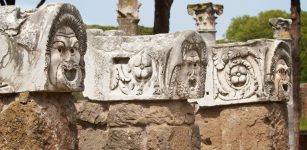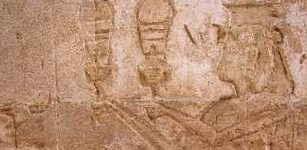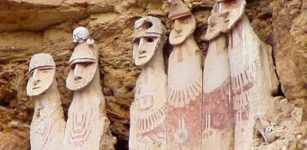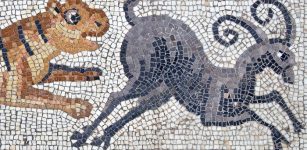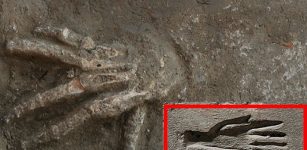Is The Mystery Of Controversial Phaistos Disk Solved?
AncientPages.com - Many have laid claim to having solved the mystery of the enigmatic round terracotta tablet - Phaistos Disk.
The disk was found by Luigi Pernier, the Italian archaeologist excavating ruins of the ancient Minoan Palace of Phaistos, on Crete in 1908.
The enigmatic artifact was spotted in a stratum belonging to the sixteenth century BC. Could it be much older?
Why was the object found in the ruined Minoan Palace? Did this object belong to the Minoans?
The very sophisticated Minoan culture flourished from approximately 2700 to 1450 BC. Phaistos was one of the most important centers of Minoan civilization, and the most wealthy and powerful city in southern part of Crete.
Now, Gareth Owens, linguist, archaeologist and coordinator of the program Erasmus of Crete Technological Institute says that the goddess of love, the Minoan Astarte, is the key figure that unlocks the mystery of the Phaistos Disk.

The disk was found by Luigi Pernier, the Italian archaeologist excavating ruins of the ancient Minoan Palace of Phaistos, on Crete in 1908.
It's important to add that the enigmatic artifact was spotted in a stratum belonging to the sixteenth century BC, but it may be of much earlier.
Speaking to the ANA – MPA news agency, Owens said that after new data found in his research, his theory has changed slightly compared to the position he had expressed about a year ago. The focus is no longer the “pregnant mother”, as originally estimated, but a “pregnant goddess” that takes shape in the face of Astarte, the goddess of love.
“There is no doubt that we are talking about a religious text. This is clear from a comparison made with other religious words from other inscriptions from the holy mountains of Crete. We have words that are exactly the same,” Owens said.

“There is no doubt that we are talking about a religious text. This is clear from a comparison made with other religious words from other inscriptions from the holy mountains of Crete. We have words that are exactly the same.”
“I suspect that the Phaistos Disc is a hymn before Astarte, the goddess of love. Words such as those mentioned on the disk have been found on Minoan offerings and as with today’s offerings, people pray when they are troubled, because of health problems or personal reasons. Man doesn’t change, after all.”
The archaeologist said he believes, moreover, that one side of the Phaistos Disk is dedicated to the pregnant mother goddess and the other to Minoan goddess Astarte.
On the importance of the figure, Owens noted that Minoan Astarte was the goddess of love, war and the mountains and her origin lies in the east. “From ancient Mesopotamia, located in today’s Turkey, Astarte went to Cyprus and became Venus,” he said.
AncientPages.com
source: Greek Reporter




